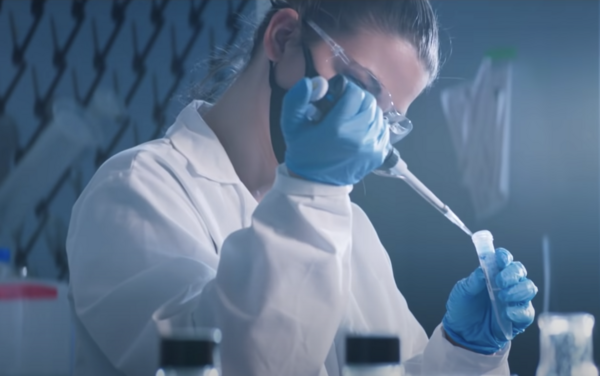
A graduate student’s discovery of a new cell may lie at the heart of what’s causing her own illness
In the pre-dawn hours, campus slumbers. But Ronan, a miniature schnauzer, is awake and ready to work. He hops out of the car, through the back door of Galvin Life Science Center, and pads down the hallway before donning his chemical booties and settling into his fireproof doggie bed in the Smith Lab. There, he appears to rest, but he’s on alert, waiting for signs that his owner, Nina Kikel-Coury, a biology graduate student, may have a seizure or faint. He’s always right, Kikel-Coury says, so when he nudges her, she puts down her beakers and sits on the floor, waiting for the moment to pass.
Kikel-Coury suffers from POTS, postural orthostatic tachycardia syndrome, an autonomic nervous system disorder that affects blood flow in between 1 million and 3 million Americans, typically women and young adults. Those numbers are growing as POTS and other forms of dysautonomia have been diagnosed as long-term impacts from COVID-19. The symptoms include fainting spells, seizures, respiratory issues, and digestive trouble.
To understand POTS, picture a thermostat, explains Kikel-Coury. You set a temperature, and then the machinery works to maintain that temperature, even as environmental conditions work against it. In people, the autonomic nervous system functions as that thermostat.
To read the full story, please click here.